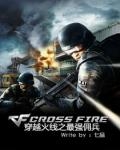Chapter 269
According to intelligence, the German army's strength in Berlin was not very strong. After all, the German army had been completely destroyed in the peripheral battles, and the total number of troops they could actually mobilize in Berlin would not exceed 150,000. Outside the city, the First Belorussian Front had nearly 900,000 troops. At the same time, the First Ukrainian Front, which advanced to the suburbs of Berlin on the southern front, had nearly 600,000 troops.
Nearly 1.6 million Soviet troops surrounded the city of Berlin, and it was only a matter of time before Berlin changed hands.
Although the German army in Berlin was not very strong, and there were a large number of so-called national commandos mixed in, and the quality of the soldiers was hard to trust, they occupied an absolute geographical advantage after all. At this time, the sturdy buildings still standing in the city were their defensive positions - street fighting had always been the most brutal.
If Yuri was the one who arranged this battle entirely, he would definitely choose the tactic of encircling but not attacking. After all, the Germans were at the end of their rope. The supplies of the German army in the city were very limited. They had no reinforcements outside and no protection inside. The Soviet army only needed to besiege them for ten days or half a month, and they would probably win without a fight.
But war is never a pure war. Any war will be mixed with many political factors, and this is especially true for the Battle of Berlin.
Comrade Stalin has drawn up an accurate timetable for the battlefield battles. As the supreme commanders, whether it is Yuri or Zhukov, they must organize the battles strictly according to this timetable. Whoever fails to complete the combat mission will suffer the consequences.
Therefore, Yuri could only formulate an operational plan to storm Berlin, and in the designation of this operational plan, too many factors of loss of manpower could not be considered.
Fortunately, after years of war, both Yuri and the Soviet troops he commanded have rich experience in urban combat. Especially Yuri. In the Battle of Stalingrad, his command used the tactics of street fighting to the extreme. Now, he only needs to use the original tactics in reverse.
In order to organize an effective offensive, Yuri selected nearly 270,000 veterans with rich street fighting experience from the 1st and 2nd Belorussian Fronts according to the combat experience of each army group, and organized a large number of offensive teams in regiments.
These squads were reinforced with various weapons. Each squad was equipped with 6-8 anti-tank guns, 10-15 tanks, as well as specialized flamethrowers and engineers.
When the various teams work together to launch an attack on a building, the ones walking in the front are always the infantry arranged in a skirmish line. Behind the skirmish line, at a distance of nearly 30 meters, are the tanks providing support for the infantry. As for the artillery, they are even further away.
Yuri's plan is to fight the German army building by building in the city of Berlin, so as to gradually compress the German living space and eventually annihilate all the defending German troops.
The First Belorussian Front's attack was launched from two directions. One direction was from the eastern suburbs of Berlin. After breaking into the city, it launched an attack towards the city center along the east-west central axis of Berlin. The other direction was towards the Spree River in the northern suburbs.
The attack was launched at 4 a.m. According to the battle plan, the artillery of the front first launched a 55-minute bombardment on the city of Berlin. Tens of thousands of artillery pieces of various types once again washed the so-called "capital of the European Empire". However, this large-scale bombardment did not ignite too many fireworks in the city, because everything that could be burned in the city had basically been burned. There was not even a complete piece of glass on the broken buildings that looked like ruins.
After the large-scale artillery bombardment, the battle in the eastern suburbs broke out first. Nine assault teams broke into the city with just one wave of fighting, but they were soon met with stubborn resistance from the German army and the battle entered a stalemate.
In the northern suburbs, the German army did not arrange too many troops for defense because of the 200-meter-wide Spree River. In order to force a crossing of the river and directly attack the city, Yuri specially transferred 10 motorboats from the Baltic Fleet.
As a result, when the battle started, the Germans made a major mistake. They tried to blow up the Moltke Bridge on the Spree River. As a result, the amount of explosives installed was insufficient. Although the bridge was blown off in the middle, a six-meter-wide break appeared, but the entire bridge did not collapse. The Soviet army quickly captured this crucial bridge, and the pontoon bridge troops repaired it. In less than half an hour, the Soviet armored forces passed through the bridge and entered the city of Berlin.
The loss of the Moltke Bridge completely disrupted the German defense plan. The Soviet army, which launched an attack from the northern suburbs, captured several blocks in the city in just one morning and pushed the attack all the way to the Ministry of the Interior building.
However, during the attack on the Ministry of the Interior building, the Soviet offensive forces were attacked by German defensive forces hiding in the subway. At the same time, there was heavy artillery bombardment from anti-aircraft fortresses on the ground.
In the city of Berlin, the Germans built a total of four anti-aircraft artillery fortresses with abnormal defense and firepower, namely the Humboldt Rhine Air Defense Tower, the Friedrichshafen Air Defense Tower, the Zoo Anti-aircraft Tower and the Reichstag Anti-aircraft Fortress.
These anti-aircraft artillery forts are built with reinforced concrete and are about 13 stories high. The ammunition depot is underground and the underground passages of the forts are connected to the subway network. On the top of the forts, there are several twin-mounted 128mm heavy anti-aircraft guns installed.
In addition, the German army also built a large number of obstacle belts on the roads leading to the city center. These obstacle belts were made of wood, stone and steel isolation piles, two meters high and four meters wide. Minefields were also set up in front of the obstacle belts.
In the first day of the offensive, the Soviet army suffered heavy losses, but also achieved remarkable results. The German army was compressed into a belt area 10 miles long and 3 miles wide. At the Tiergarten Zoo Square, the assault squad of the 1st Belorussian Front and the assault squad of the 1st Front successfully joined forces.
On the same day, at Gardelegen, nearly 100 kilometers away from Berlin, the main force of the Soviet 47th Army successfully joined forces with the U.S. Ninth Army. Later that day, the 49th Army of the 2nd Belorussian Front successfully joined forces with the British Second Army in Deltz.
As the street fighting in Berlin entered its second day, the Soviet army found a way to deal with the German anti-aircraft artillery fortresses. Several assault teams carrying anti-tank guns entered the German-controlled subway network and engaged in fierce battles with the German troops hiding there.
As the safest air raid shelter in Berlin, the subway network hid a large number of Berlin citizens. These refugees huddled underground, as nervous as moles, but their number reached millions. The battle between the Soviet and German armies was almost directly launched in the places where the refugees gathered. In just one day of fighting, tens of thousands of Berlin citizens died from accidental injuries in the battle. When the street fighting in Berlin ended, more than 60,000 bodies were cleared from the subway network. In the entire Battle of Berlin, the total number of casualties among Berlin citizens was more than 200,000.
The Soviet attack from the subway directly killed the German defense forces. Four anti-aircraft fortresses connected by the subway network were successively captured by the Soviet army. By nightfall that day, the Soviet army had advanced to Wilhelm Street and Bandler Street near the Reich Chancellery. At the same time, the Soviet troops attacking from another direction pushed the front line to less than 0.25 kilometers away from the Empire State Building.
…
The entire city of Berlin was like the Chinese New Year, with crackling sounds everywhere.
In the air, Soviet fighter planes circled around with sharp whistles. They dived towards the German-controlled buildings, first dropping heavy bombs, and then dropping light bombs while climbing. Finally, after circling, they dived and strafed... This was a tactic often used by German fighter planes when bombing Soviet ground forces. Now, the Soviet Red Army followed suit and used it on the Germans.
At first, this kind of bombing by the German Air Force was very cruel, and a round of devastation would often last for several hours. But now, the Soviet Air Force is even more cruel, because such bombing will not stop throughout the day.
In the Tiergarten Zoo, the carcasses of animals killed in the explosion remain in the shattered iron cages. This most famous zoo in Europe has now become a ruin. People can no longer survive here, so naturally no one will care about these innocent animals.
In front of the collapsed arch of the zoo, a tank rolled over the rubble, bumped into an alley, crashed through the wall of a two-story building, and crashed out from the other side, then slowly drove to the east side of the street - it was obvious that the tank was lost in the ruined streets of Berlin.
Ten minutes after the tanks drove away, a group of Soviet cavalry came galloping over. Judging from the number of people, it should be a battalion of troops. Behind this group of cavalry were two armored vehicles.
The cavalry team stopped in front of a building opposite the zoo. The soldiers on horseback dismounted and set up a cordon on the spot. More than a dozen soldiers rushed into the building and began to scout each floor.
Two armored vehicles slowly approached and stopped in front of the building. The door of the rear compartment slowly opened, and a colonel got out of the car first. It was Arseny.
After getting off the armored vehicle, Arseny first looked around, and after making sure there was no danger, he asked Yuri in the car to get off - this damn place was only 800 meters away from the Soviet offensive line, it was a very dangerous place, and Arseny had to be careful.
In fact, Arseni was unwilling to let Yuri enter the city of Berlin. If the general was hit by a stray bullet, it would be too worthless. However, he could not stop Yuri now, not to mention that Comrade Zhukov would come later.






